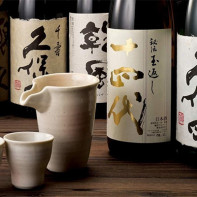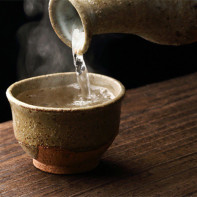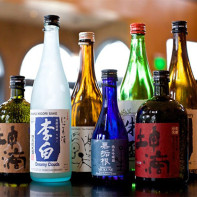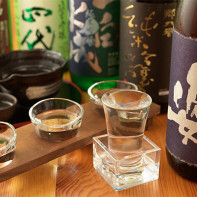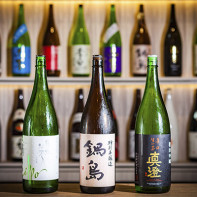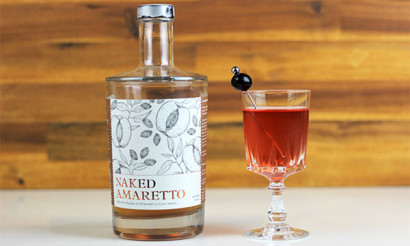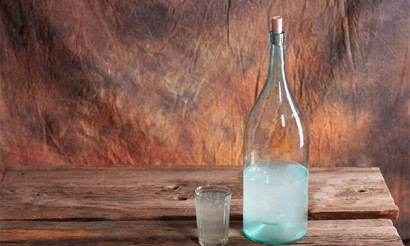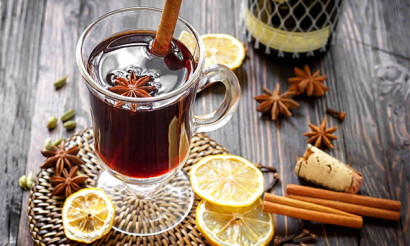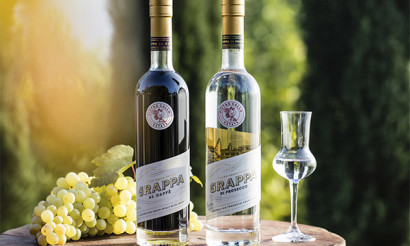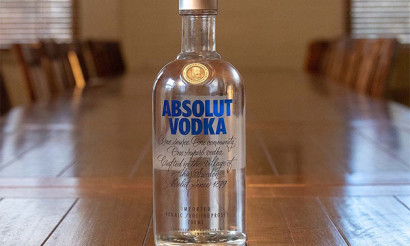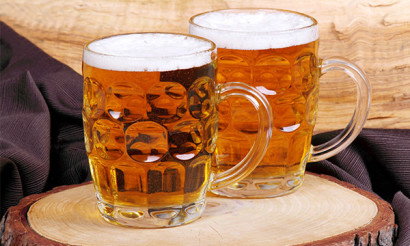How to drink sake properly
The alcoholic beverage sake is made from rice. Contrary to widespread misconception, it is not a strong drink; its alcohol content is only 18 to 20 degrees. So it is not at all vodka, as many believe. Its strength is closer to that of wine or beer, and its consistency is similar to that of liqueur. Sake is golden, soft yellow and sometimes amber in color, while its taste subtly resembles that of sherry, and it also has notes of fruit. The aftertaste of the best varieties is reminiscent of matured expensive cheese, mushrooms or even soy sauce.
- What is sake
- Types
- Composition and calories
- How to drink sake correctly
- What to drink with
- What to drink with
- What to drink with
- Why sake should be drunk warm
- Benefits and Harms of Sake
- Sake Cocktails: Recipes
- "Sake Bomb
- "Geisha" with tomato juice
- "Zen"
- "Last Sigh"
- "Sunny Sake."
- "On the Moon"
- "Burning Sake"
- "Nozomi"
- "Raspberry Sake."
- Japanese Daiquiri
- How to Make Sake at Home
- Interesting Facts
What is sake
The drink is made from rice with the addition of rice malt. The production technology is based on mold fermentation. The essence of the process is as follows: wort, prepared from rice of strictly defined varieties, is fermented using the mold fungus koji and yeast. About 60 varieties of rice are currently in use, all of which contain large amounts of starch. The most preferred varieties are Yamadanishiki, grown in the plantations of Hego Prefecture, and Omachi, from Okayama. The quality depends on the degree to which the rice is ground.
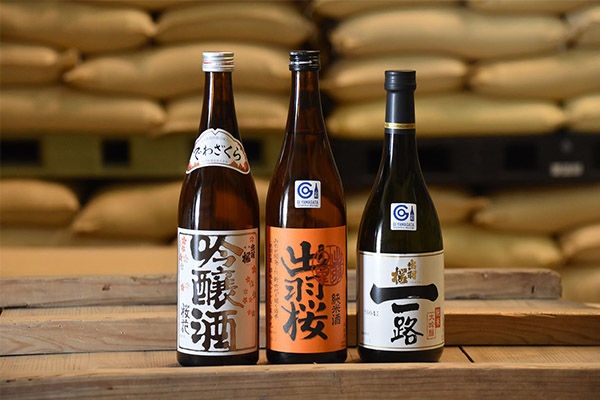
The water used to make sake is also of great importance. Sake made with milder water is softer, lighter, and more feminine. A thicker, fuller sake comes from hard water. In addition, it must contain phosphorus, calcium, potassium and magnesium, but is not allowed to have iron and manganese. Generally, water is taken from several springs.
Sake production involves several stages:
- In the first stage, the rice is ground to remove bran, thus freeing it from the proteins and fats that give the finished drink its unpleasant taste and flavor. The grain can be ground to as much as 65%.
- Next, the rice is washed and soaked for several hours, and the period of soaking depends on the degree to which the grain is ground - the stronger, the shorter the time. Afterwards, the rice is steamed. This is an important point because the steamed rice is overcooked, and as a result, fermentation goes too fast, so the drink does not have time to fully gain flavor. Undercooked rice does not ferment its entire thickness, but only on the surface.
- The next step is the preparation of the koji fungus fermentation. This is the most critical part of the process. The mold fungus is added to the rice and left for a day and a half to two days in a warm place with high humidity. The process is monitored frequently - every 3-4 hours.
- Then the resulting sourdough is mixed with the rice, water is added, yeast is added, and the mixture stands for half a month to a month, turning into alcohol. Gradually, during the first four days, rice and water are added to it in three more stages. This multi-step process is needed to ensure the right ratio of koji to yeast. Only then is the resting period suitable for the drink.
- At the end of the fermentation period, the liquid is filtered and divided into pure sake and white sediment. The liquid is then purified by putting it through an activated charcoal filter. This removes unwanted odors, but also dulls the color somewhat.
- The final stage is ageing, during which the sake is pasteurized to kill bacteria and yeast, and then placed in hermetically sealed containers for six to twelve months.
The final result is a beverage of about 18-20 degrees, but it is often diluted with water to achieve 15 degrees before it is bottled.
Sake is not tolerant of light and high air temperature, so it must be kept cool and dark. The best place for it is the refrigerator, and even on the door it does not feel very well, preferring the depth of the shelves.
Types
The classification of Japanese alcoholic beverage is based on the two most important characteristics. The first is the indicator of the polish of the rice, the second is the method by which the fermentation is stopped: by itself or by adding alcohol. The names of drinks that have stopped fermentation on their own, without alcohol, usually include the word "Junmai" (or "Junmai").
- So Junmai (or Jummai) was a pure, unadulterated sake. No alcohol was added and no sugar or starch was added. It is based solely on rice with a degree of polish ranging from 90 to 70%. Its aroma is slightly floral and it is usually served either cool, at 15 or 20 degrees, or warmed to 40 degrees.
- Futsushu is a drink with added alcohol, based on rice with a minimum of 90% grinding, which merely removes the top protein layer that inhibits fermentation. It is the most widespread type, it occupies three quarters of all production volumes. In its essence it is an ordinary not bad table wine, similar to the European ones, with a bright aroma and memorable taste, but without any special, distinctly expressed soloing notes. It is served both chilled to 5 or 10 degrees and heated to 50 degrees.
- Hongzezo: To make it, the rice is ground to 70% and a little purified alcohol (or pure alcohol) is added to soften the flavor and bring out the aromas. The resulting flavor is slightly tart, but light. It is recommended to serve it at 5, 10 degrees or reheated to 50. This type of sake is more expensive than the others.
- Junmai ginje - This type of sake is made not only using rice with a grinding degree of 60%, but also floral yeast. As a result, the product ferments at a fairly low temperature. It turns out quite a mild aromatic drink, in which notes of nuts, flowers, fruits and herbs clearly solo. It is drunk chilled to 10 degrees.
- Ginze is sake made from rice that has been ground to 60-70%, and the fermentation is stopped by adding alcohol. Its flavor is similar to that of Junmai ginze, but more pungent in taste. It is served chilled to 10 degrees Celsius.
- Junmai Daiginze: This sake is made from highly-ground rice at 50% or higher, sometimes as much as 23% or 10%, with no alcohol added. The aroma is bright, well expressed, subtle and unobtrusive at the same time, the taste is exquisite and memorable. It is served both cooled down to 10 degrees and warm, but the fine aroma disappears when heated.
- Daiginze is sake of the highest class made using rice ground to 50% of the finest and most valuable kinds such as miyamanishiki, yamadanishiki, or gohyakumangoku. It is similar to its Junmai Daiginze counterpart, but is richer due to the added alcohol. It is not heated before drinking; it is consumed cold or at room temperature.
- Genmai is an expensive variety, made from unground brown rice. It has a deep, velvety flavor and a rich aroma of almonds and lime, with notes of caramel and juniper in the aftertaste. It is drunk only after cooling to 5 degrees.
- Tokutei Meiseyu is considered an elite drink, the best of all kinds of Japanese alcohol. It can be produced only by skilled craftsmen who have absorbed knowledge and skills accumulated by their predecessors over the centuries. This type of sake is distinguished not only by its excellent quality but also by its high alcohol content.
Sake is divided into unfiltered and filtered, unpasteurized and pasteurized.
Unfiltered (or nigori) is usually made with either Futsushu or Junmai, the others are usually filtered. Unfiltered is recommended to drink chilled, because when it is warm it becomes bitter and loses all its original flavor.
Unpasteurized (or namachozo) is also better not to heat for the reason that it loses its flavor.
Composition and calories
Sake is a product which is completely fat-free. Carbohydrates in 100 g of the drink are almost 5 g, proteins - 0,5 g. The caloric value per weight is 134 kilocalories, or 6.7% of the daily norm of 2000 kilocalories. Ethyl alcohol contains 16.1 g.
Micronutrients in the drink is a rich set. There are calcium and phosphorus necessary for hair, nails and bone skeleton; potassium ensuring normal heart operation; iron involved in the processes of hematopoiesis; and sodium involved in the work of the circulatory system. In addition, sake contains magnesium, known for its ability to calm the nervous system; zinc, which is responsible for metabolic processes; copper, which is involved in the work of the circulatory and excretory systems of the human body; and selenium, which plays a role as an antioxidant.
How to drink sake correctly
In Japan, national traditions and rituals are deeply respectful and deeply rooted in their observance. This rule applies to sake drinking as well. They gather for New Year's sake on January 1. There are special memorial sake, and there is a special order for marriage ceremonies.
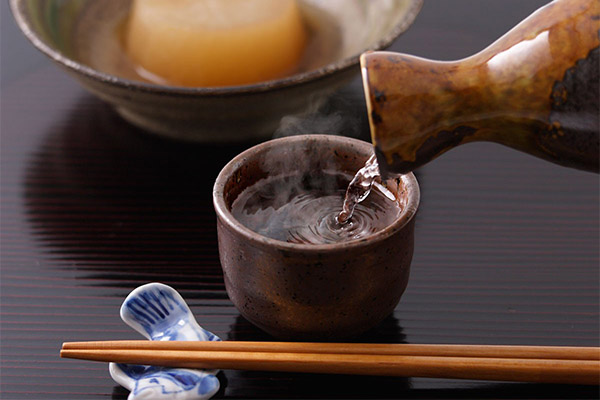
The Japanese consider it the height of indecency to pour alcohol to oneself. The host usually pours the drink for the guests and the person sitting next to him. The jug with the drink must be held with both hands, because the right to fill with one hand is given only to the one who has a higher status than the one who is poured. If the higher-ranking person fills the cup, the guest should not only hold it in the balance with his right hand, but also put the palm of his other hand under the bottom.
When the pitcher has gone around the circle without missing a single cup, they are raised to eye level and say in a friendly voice, "Kanpai!" During the subsequent touching of the cups, the tradition comes into play again: one must not raise one's container higher than the tapping dignitary.
"Kanpai" means "to the bottom," but it means nothing. It is not customary to empty the glass in one or two gulps. You only have to take a small sip or two at the most. That is why the sake drinking ritual takes a long time.
One should keep one's back straight during the sake ceremony: correct posture is another component of the ritual. If intoxication strikes, you should relax immediately, not panic or faint, straighten your back and sing a long song.
During large feasts it is not uncommon to perform the circular cup ceremony. The person in charge of the feast pours sake into a large bowl, takes a sip from it, and sends it around the circle. After this ritual, the feast continues.
What is sake drunk from?
Sake is served in small porcelain or ceramic jugs called tokkuri. They are round, with a narrow neck reminiscent of vases. It is also possible to serve the drink in a dish that resembles a miniature teapot, called a katakuchi.
The jug is brought and put on the table on a special stand made of ceramics, which the Japanese call tokkuri hakama.
The alcoholic beverage is drunk from small cups called choko, made of clay, wood or glass. The cups slightly resemble small bowls. At formal events, sake is most often served in flat bowls called sakazuki.
Sometimes tiny square jars called masu, only 30-40 ml in volume, are brought to the feast. Usually they are used to measure rice, but you can also pour sake into them and drink them according to all the Japanese rules.
But nowadays not everyone adheres to tradition, so it's quite realistic to see them served in a wine glass, and it's no longer a surprise to anyone.
What to snack on
Many people still consider sake to be exotic, which is why they think that it should be served with special, peculiar foods and dishes.
Since this drink is recommended as an aperitif and digestif, it may not be used as a snack at all. But there are a number of products that can set off the taste of sake and make it more harmonious.
It is categorically not recommended to accompany sake with spicy sauces and dishes: they will overshadow the drink's characteristic flavor and aroma. In general, the quality of alcohol dictates the list of acceptable foods and dishes for it, and the more expensive it is, the stricter the requirements for appetizers.
For example, Honzezo goes well with traditional Japanese sushi, sashimi (thin plates of fish), and teriyaki sauce. Daiginze ranks as a more expensive drink, and it goes well with duck, lamb, or sashimi. Genmai, which occupies an even higher price niche, is served with expensive dark chocolate, fine hard cheeses, and traditional Japanese tempura.
As an appetizer to sake, we also recommend pickled and fermented vegetables such as water lotus root, daikon, herring roe, oysters, and dishes of eel, tuna, squid, and sea urchin. They are a good backdrop for the Japanese drink, on which it looks winning. Salads, desserts, and even soups are not forbidden either.
What to wash down with
In Japanese tradition, it is not customary to wash down sake. But it is included in cocktails, and the result is quite good.
Why sake should be drunk warm
In fact, sake may not only be heated to 50-60 degrees, but it may be cooled down to 5 or 10 degrees before consumption. Whether the drink is warm or chilled depends on both the quality of the drink and the drinker's preference.
Initially there was a rule: only high quality, expensive sake should be drunk cold. The cheaper and poorer quality sake must be heated, because raising temperature causes the smell and taste of the drink to vanish, up to disappear entirely. If expensive varieties, such as Ginjie and Junmai Ginjie, distinguished by bright aroma notes and original flavor accents, lose these advantages, it will be a real shame. And the cheap version - for example, Futsushu - will not suffer much, rather, it will become better. All because heating will remove the essential oils that have passed into the alcohol from the low-processed rice that was its base. The sake will only benefit from this. And in cold weather, a few sips of warm, warming drink is just what the doctor ordered.
It is not difficult to heat sake: you need to hold tokkuri for several minutes in a pot of hot water.
The Japanese have defined sake heating as follows: 30 degrees - solar; 35 degrees - human heat (or human skin); 40 degrees - barely warm; 45 degrees - warm; 50 degrees - hot; 55 degrees - scalding (or extra).
Benefits and harms of sake
The traditional national drink has been thoroughly studied by scientists of the Land of the Rising Sun. Their conclusion is unambiguous: sake is beneficial for the body, provided that it is drunk in moderation. If the rule "moderation and accuracy" is observed, this alcohol helps to normalize blood pressure, refreshes the memory and stimulates the heart and circulatory system. With its help prevent the development of angina and heart attacks, delay the onset of tumors - both benign and malignant. It is a good means of preventing cancer.
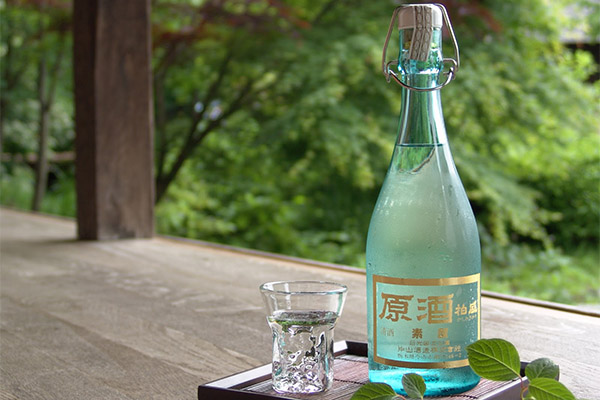
Owing to its ingredients, sake has a disinfecting effect and serves as a compress based on it for rapid resolution of hematomas and hemorrhages. Insomnia caused by chronic fatigue can also be treated with this drink. But in order to improve sleep should not drink alcohol, but add it to the bath, which should be taken before going to bed. For a relaxing bath is enough to pour a small glass (200 ml) of sake in warm water.
Japanese women use this drink for cosmetic purposes to improve skin condition by rubbing it on the face. As a result, the skin becomes clearer and clearer, pores become narrower and, if there are scatterings of blackheads, their number decreases. Systematic use of sake tightens the skin, it noticeably softens it.
The drink is used to flavor chicken and fish, and is especially important when cooking fugu fish, known for its deadly poison.
Despite the fact that sake is made from living natural products according to safe recipes and does not contain harmful substances, we must not forget that it is still an alcoholic beverage, so it should not be drunk often and in large quantities. It will have a negative impact on the liver, worsening its condition - up to the development of cirrhosis.
For the same reason sake is contraindicated for pregnant women and nursing mothers, as well as people under 18 years of age.
Do not drink the alcoholic beverage and those who are forced to take medicines for health reasons. Alcohol and medications are incompatible, their combination can harm the body.
Cocktails with sake: recipes
"Sake Bomb."
Pour 80 ml of sake into a shaker, prepare 30 ml of strawberry syrup. Moisten the edge of the glass with syrup, dip it in granulated sugar, and add the rest of the syrup to the sake. Thoroughly mix the contents of the shaker and carefully pour it into the glass. Put a couple of olives on a toothpick and put them in the cocktail.
It tastes like a real gastronomic bomb, the cocktail has such a name for a reason.
"Geisha" with tomato juice
To start, mix in a small bowl a drop of lemon juice with a drop of soy sauce and some wasabi, taken literally on the tip of a knife. Pour 90 ml of tomato juice into the mixture and strain into a shaker, topped with 40 ml of sake. Shake the mixture thoroughly, then pour the cocktail into a glass and garnish with a celery stalk and a lime wedge. Serve this cocktail when chilled. It turns out refreshing, light, with a delicious spicy note.
"Zen.
Pour 60 ml each of quality vodka and sake into a shaker, along with 30 ml of green tea and 20 ml of freshly squeezed lemon juice. Shake with three to four ice cubes.
Pour the cocktail into vodka shot glasses or sake cups. This cocktail will suit those who find sake not very strong.
"Last Breath."
Pour the well-cooled spirits into an ice-filled shaker: 90 ml of sake, 70 ml of Bianco vermouth, and 25 ml of banana liqueur. Shake thoroughly for about a minute, strain and pour into a glass. This is a serving for one person. Although the strength of the cocktail is low, the volume makes it capable of knocking someone inexperienced in libations off their feet.
"Sunny Sake
Pour 40 ml of sake, 30 ml of peach juice, a half tablespoon of lemon juice, and 50 ml of apple juice into a shaker. Add cardamom by the tip of a spoon and a handful of ice cubes. Stir and strain, pour into a cocktail glass and serve with a straw. This cocktail is for those who like juices, soft drinks and avoid hard drinks.
"On the Moon."
Mix in a glass 30 ml of Bianco vermouth with 80 ml of sake and a tablespoon of lemon juice. Place a lemon slice on the edge of the glass. The taste of the cocktail is interesting, but not everyone will like the result of the "friendship" of vermouth and sake.
"Burning Sake."
In a shaker, mix 10 ml amaretto and 50 ml sake. Pour into a glass, garnish with a basil leaf and a few peppercorns. A cocktail for those who like spicy and spicy flavors and aromas, in the aftertaste there are notes of almonds.
"Nozomi".
Mix 30 ml of prune wine, 40 ml of sake and a tablespoon of honey syrup in a shaker with some ice. Pour into a glass, place a basil leaf, and place in the microwave for 15-10 seconds. The lightly heated drink will begin to give off the flavor of plum and honey.
Despite the unusual method of preparation, the cocktail is quite tasty.
"Raspberry Sake
Pour 50 ml of raspberry syrup and 100 ml of sake into a shaker. Stir, then pour into a glass with 3-4 ice cubes.
People who like experiments and raspberries in any form will like this drink.
Japanese Daiquiri
Put a handful of ice cubes into a shaker and pour a half tablespoon each of sugar syrup and lemon juice, 90 ml of sake and 25 ml of melon liqueur. Shake for 15-12 seconds, then strain the cocktail into a glass and garnish with a piece of ginger.
How to Make Sake at Home
To make home-made sake, sticky and glutinous rice is the most suitable. A koji mold fungus is also needed, it is used for its ability to convert the starch contained in the rice into fermentable sugar. If you cannot find such yeast, you can replace it with wine yeast and add sugar to make it stronger. Baker's yeast will not work: if you use it, you will get a brew of rice instead of sake.
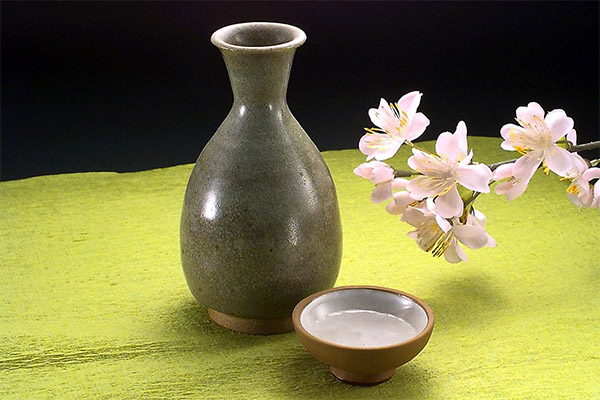
From 1 kg of rice you will get from 6 to 8 liters of wort, with this in mind and need to stock up on yeast, reading their consumption on the package. Later you will also need sugar which will make the drink stronger and sweeter.
Rice is washed in several waters, so that there is no turbidity and pour in a pot of boiling water, so that it covered the groats with a layer of about 3 centimeters. Cover the pot with a lid and set aside for an hour, then filter the water with a sieve.
Next, steam the rice for 25-30 minutes, with the grain loosely covered with the lid. When the rice becomes soft and a little sweet, put the product on a baking tray or tray as an even layer, wait until it cools completely and spread the yeast over its entire area. Stir in the rice and yeast.
Then move the rice-juice mixture into a glass jar and close by making a water seal from the tube, which leads into an adjacent jar with water. To stand this composition a whole month in a warm room at a temperature no lower than 22 degrees. The wort will slowly, but noticeably stratify.
After a month, separate the rice from the liquid, strain the mash and squeeze it well. The grains are no longer useful, they can be thrown away.
The resulting liquid is already young sake. But it still has a second cooking step to take place. It is necessary to add sugar at the rate of 120 g per 1 liter and put it back into the jar with a water seal. The drink should stand for another 5 to 15 days - until it has fermented. The fermented sake becomes light and no more gas is released. A sediment forms at the bottom of the jar.
Carefully, through a tube, pour the liquid without sediment into another container. If not enough sweetness, you can add more sugar, this is already to your liking. Pour the drink into glass bottles and seal it tightly.
If you made sake with koji fungus, you need to pasteurize it to kill the fungus, but you don't need to do this with wine yeast.
To pasteurize it, you will need a large saucepan with a wooden grate or a cotton cloth rolled up in several layers at the bottom (you can use a towel). Put a jar filled with water in the center, in which to put a thermometer, arrange the bottles around, fill the pot with water and start heating it. When it reaches a temperature of 62-63 degrees, carefully watch that the thermometer column does not rise higher, otherwise the sake will acquire a taste of boiled.
The pasteurization time depends directly on the bottle volume: half-liter bottles last 20 minutes, those of 0,7 l volume take 5 minutes longer and the one-liter bottles last for half an hour.
Turn off the gas, leave the bottles to cool directly in the water. When its temperature drops to 35-40 degrees, remove the bottles. You can check the tightness of the closure by turning the bottle upside down.
And when the bottle is ready, it can ripen in the cellar for about three months at a temperature no higher than 12 degrees.
Interesting facts
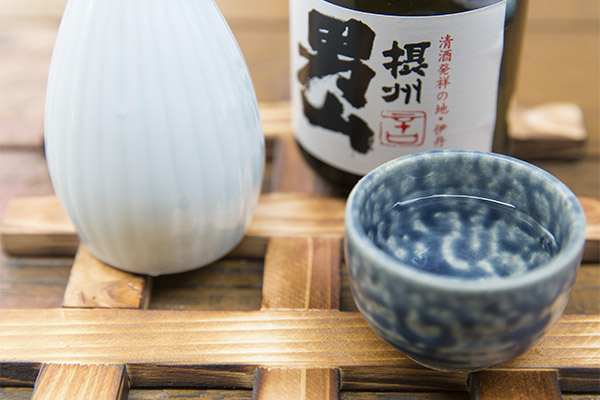
- The Japanese learned how to make sake almost two thousand years ago. For hundreds of years it was available only to the imperial palace and Shinto temples, but later, in the Middle Ages, it was brewed in village communities as well. The technology of those years was very peculiar: rice was chewed and spat into a bowl, in which the fermentation process then took place. The koji mold was found later.
- From the 17th century onwards, sake was made in large quantities for trade. The Kinki district (the area that now contains the prefectures of Osaka, Kyoto, Osaka, Hego, and Nara) became the center where the main sake production was concentrated.
- The fermentation process uses fungi that are different from those used to make wine, and because of these fungi the drink cannot be stored for long. Even a year for sake is a risky period. That is why there is no such thing as a multi-year aged sake.
- One day the Japanese emperor Saga went on a winter hunt, where he felt unwell and began to feel chills. Minister Fujiwara Fuyutsugu, who kept the emperor company, came up with the idea of heating sake, and then gave the drink to the man who had fallen ill. The man lost his chills and felt much better. This was the first time he drank warmed sake. Since then, drinking a cup of hot sake in cold winter weather has become a Japanese tradition.
- Sake production was booming in Japan until the 1940s, but with the outbreak of World War II most of the factories closed. It wasn't until the 1970s that production picked up again, but the focus was mainly on premium drinks. This happened because producers learned new techniques for processing rice - mechanized. And what used to be the most labor-intensive stage has become more affordable.
- Today there are about a thousand sake factories in the Land of the Rising Sun, a pittance compared to the days when the drink was at the height of popularity. Back then there were about 30,000 factories.
- In Japan, they drink much less sake than in North America or Europe. The Japanese in general are not a big drinker. The expression "pissed as a pig" means to take more than three small cups of sake in one evening.
«Important: all information on this site is provided for informational purposes only. purposes only. Please consult with a health care professional before following any recommendations. health care professional before using any of the recommendations. Neither the editors nor the authors shall be liable for any possible harm caused by materials."

